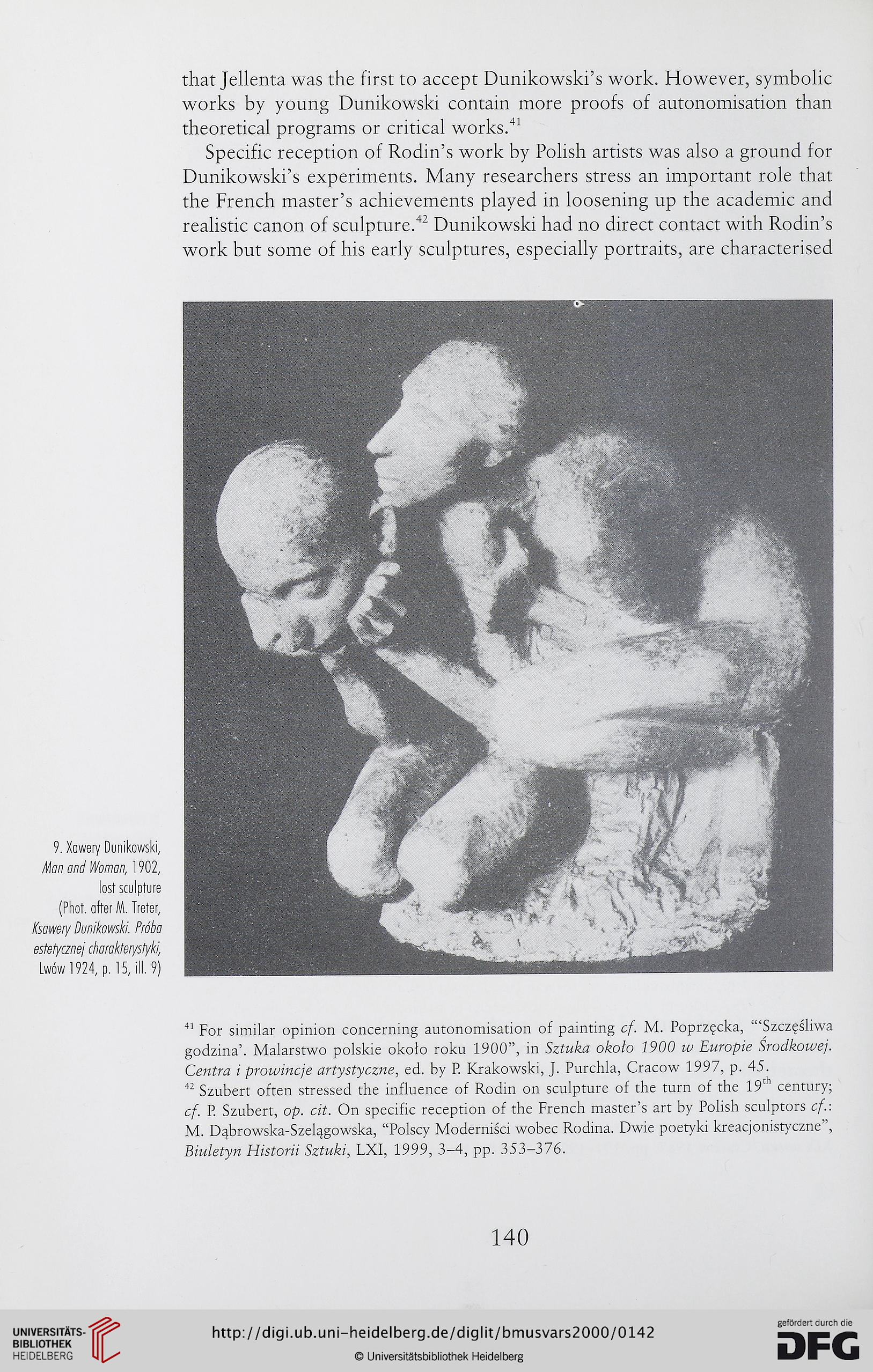that Jellenta was the first to accept Dunikowski’s work. However, symbolic
works by young Dunikowski contain morę proofs of autonomisation than
theoretical programs or critical works.41
Specific reception of Rodin’s work by Polish artists was also a ground for
Dunikowskie experiments. Many researchers stress an important role that
the French master’s achievements played in loosening up the academic and
realistic canon of sculpture.42 Dunikowski had no direct contact with Rodin’s
work but some of his early sculptures, especially portraits, are characterised
9. Xawery Dunikowski,
Mon and Woman, 1902,
lost sculpture
(Phot. afterM. Treter,
Ksawery Dunikowski. Próba
estetycznej charakterystyki,
Lwów 1924, p. 15, ill. 9)
41 For similar opinion concerning autonomisation of painting cf. M. Poprzęcka, ‘“Szczęśliwa
godzina’. Malarstwo polskie około roku 1900”, in Sztuka około 1900 w Europie Środkowej.
Centra i prowincje artystyczne, ed. by P. Krakowski, J. Purchla, Cracow 1997, p. 45.
42 Szubert often stressed the influence of Rodin on sculpture of the turn of the 19th century;
cf. P. Szubert, op. cit. On specific reception of the French master’s art by Polish sculptors cf.:
M. Dąbrowska-Szelągowska, “Polscy Moderniści wobec Rodina. Dwie poetyki kreacjonistyczne”,
Biuletyn Historii Sztuki, LXI, 1999, 3-4, pp. 353-376.
140
works by young Dunikowski contain morę proofs of autonomisation than
theoretical programs or critical works.41
Specific reception of Rodin’s work by Polish artists was also a ground for
Dunikowskie experiments. Many researchers stress an important role that
the French master’s achievements played in loosening up the academic and
realistic canon of sculpture.42 Dunikowski had no direct contact with Rodin’s
work but some of his early sculptures, especially portraits, are characterised
9. Xawery Dunikowski,
Mon and Woman, 1902,
lost sculpture
(Phot. afterM. Treter,
Ksawery Dunikowski. Próba
estetycznej charakterystyki,
Lwów 1924, p. 15, ill. 9)
41 For similar opinion concerning autonomisation of painting cf. M. Poprzęcka, ‘“Szczęśliwa
godzina’. Malarstwo polskie około roku 1900”, in Sztuka około 1900 w Europie Środkowej.
Centra i prowincje artystyczne, ed. by P. Krakowski, J. Purchla, Cracow 1997, p. 45.
42 Szubert often stressed the influence of Rodin on sculpture of the turn of the 19th century;
cf. P. Szubert, op. cit. On specific reception of the French master’s art by Polish sculptors cf.:
M. Dąbrowska-Szelągowska, “Polscy Moderniści wobec Rodina. Dwie poetyki kreacjonistyczne”,
Biuletyn Historii Sztuki, LXI, 1999, 3-4, pp. 353-376.
140




